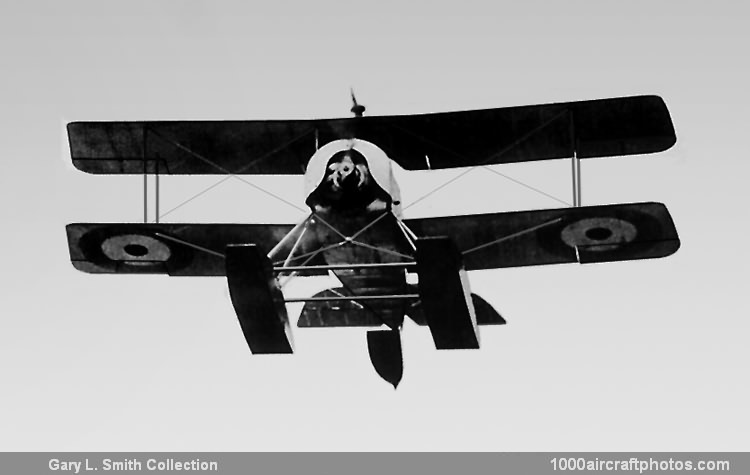10/31/2011. Remarks by Johan Visschedijk: "Derived from the Schneider single-seat fighter seaplane, the Baby first appeared in September 1915, and differed from its predecessor primarily in having a 110 hp Clerget nine-cylinder rotary engine in place of the Monosoupape, this being accommodated by a horseshoe-shaped open-fronted cowling.
As on late production Schneiders, ailerons replaced wing warping for lateral control, and armament usually consisted of a single 0.303 in (7.7 mm) machine gun synchronized to fire through the propeller, although a few Baby examples retained the arrangement of the Schneider with the gun attached to the center section and firing upward to clear the propeller.
Several aircraft were fitted with two 0.303 in (7.7 mm) guns side-by-side over the wing; one batch of Blackburn-built aircraft (sometimes referred to as the Blackburn Baby) was fitted with Ranken explosive darts as anti-airship weapons, and at least one was fitted with Le Prieur rockets, ten of these devices being attached to the interplane bracing struts. Two 65 lb (29.5 kg) bombs could also be carried.
The Baby was widely used by the RNAS to provide fighter aircraft for use with patrol ships, as escorts for two-seaters and for operation from early aircraft carriers. A total of 286 aircraft were built of which 195 were produced by Blackburn, 105 of the latter being fitted with the 130 hp Clerget engine, and, of these, 40 were fitted (initially) to carry the Ranken dart and no gun armament.
Small numbers were used by the military services of Australia, Canada, Chile, France, Greece, Italy, Japan, the Netherlands, Norway, the UK and the USA. A more extensive modification of the Sopwith float fighter was the Fairey Hamble Baby."
